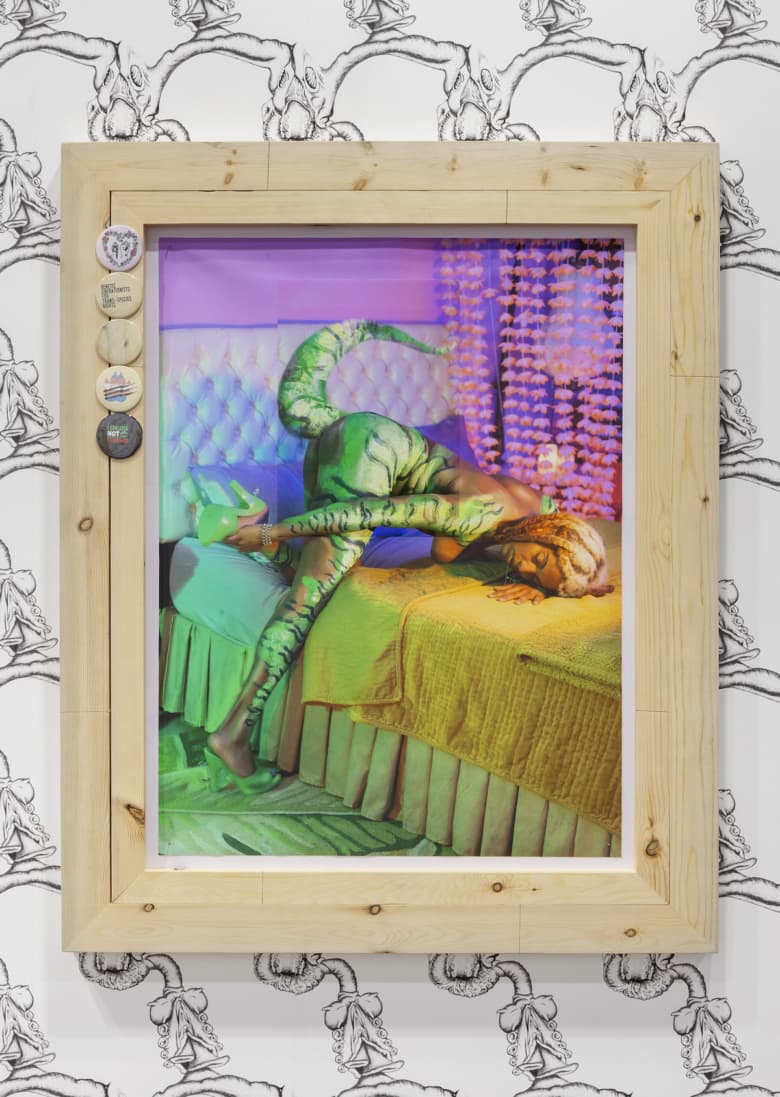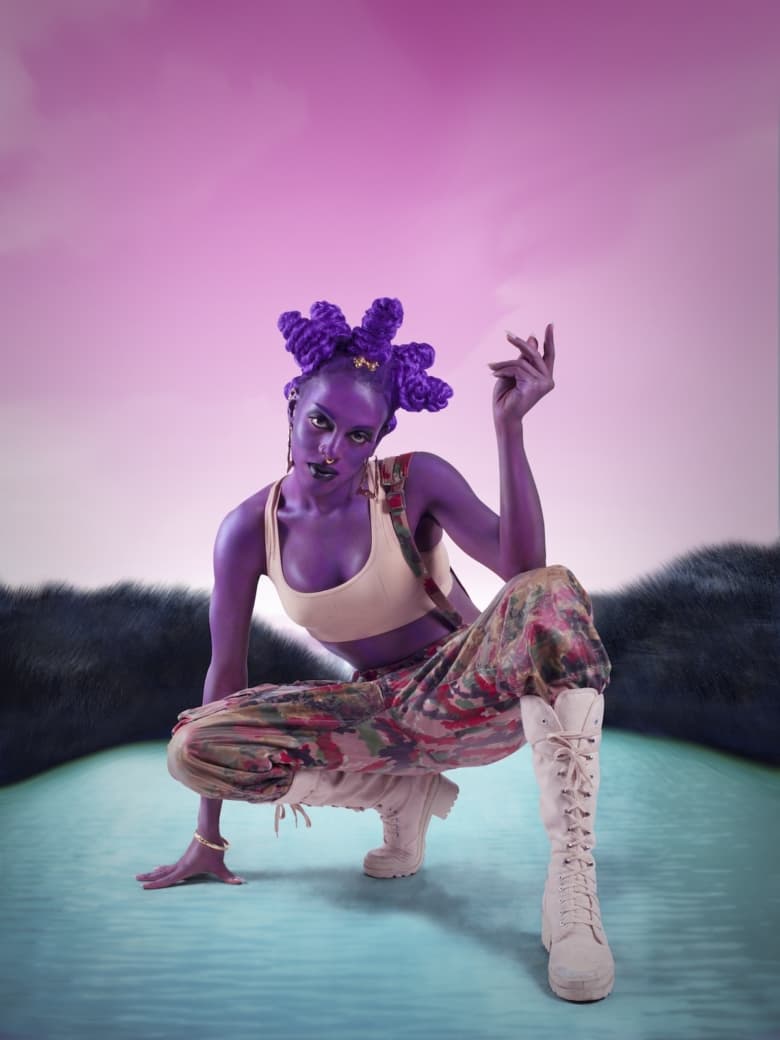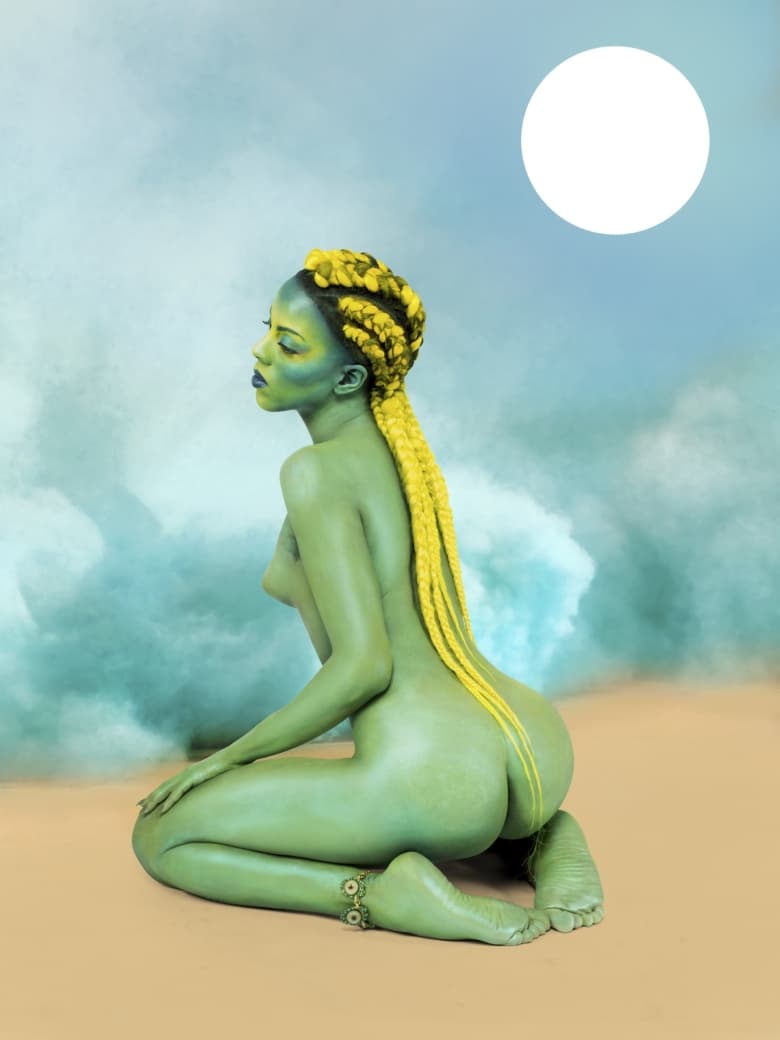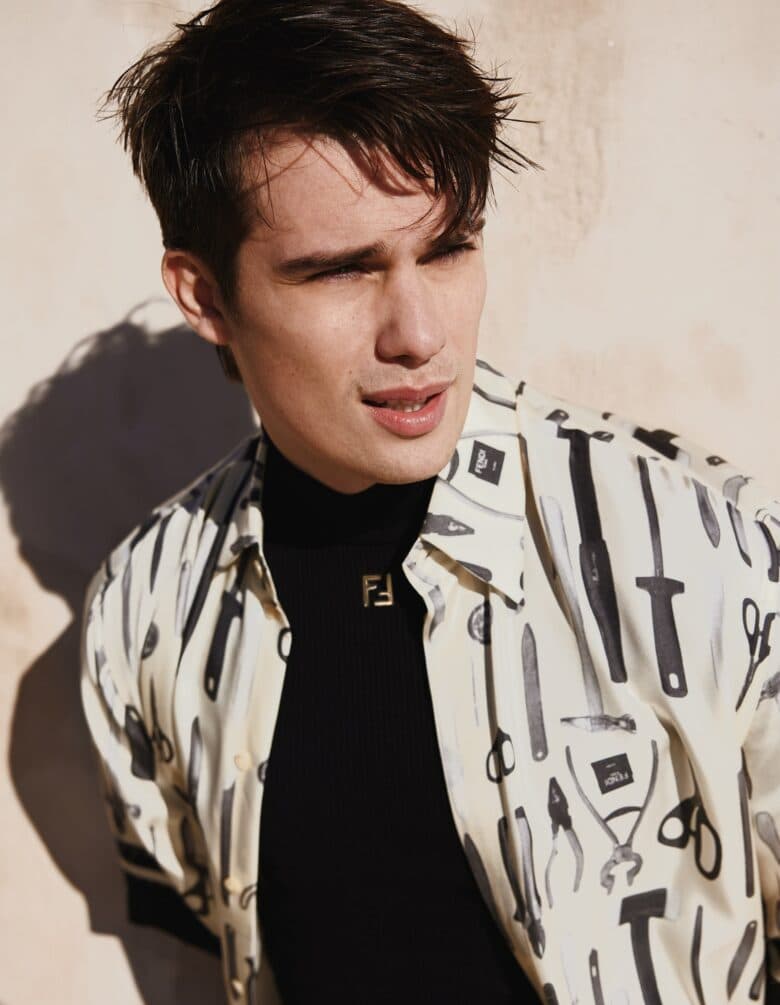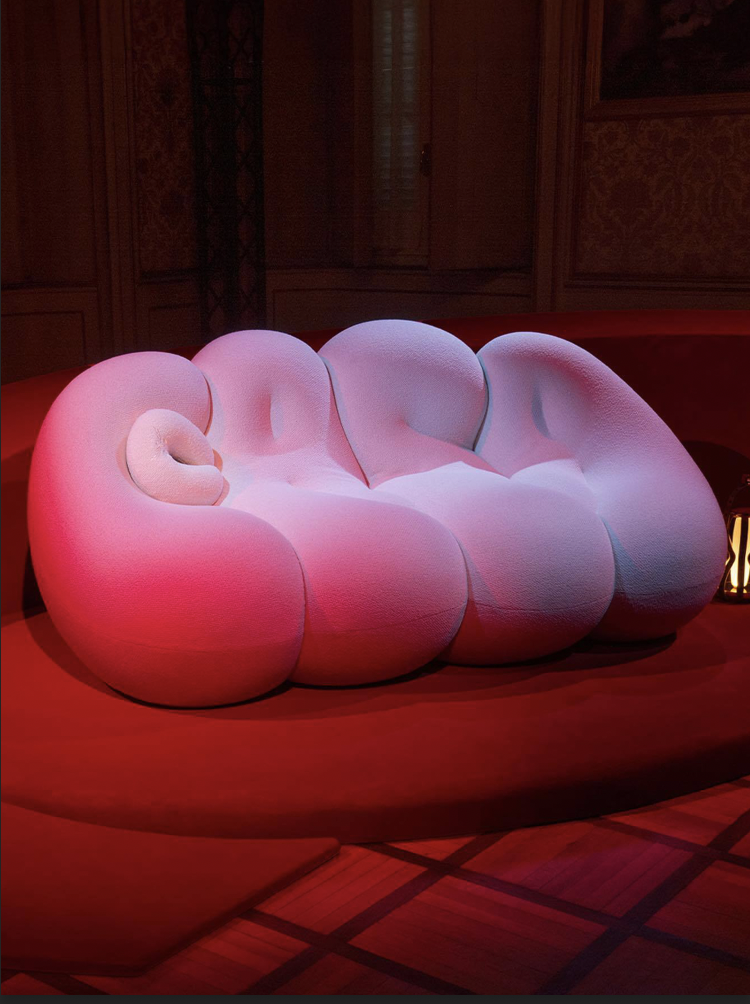The Future: Juliana Huxtable
There’s no way to neatly sum up Juliana Huxtable’s artistic interests. Over the years, her work has looked at topics such as skinheads, the Nuwaubian Nation, trans identity, and furries. What really gets her excited are ideas. Explaining the thought process behind her recent solo show at Reena Spaulings, New York, she says: “A lot of my work recently has been stimulated by ideas around limits – like what is the species or what is the border of the genetic?”
The exhibition in question, Infertility Industrial Complex: Snatch the Calf Back, saw grotesque paintings of Juliana as a bovine- human hybrid jostle for space with hot pink photo portraits of her styled as a sexy bat and posed like a Playboy cover girl. Elsewhere, an installation of public-toilet stalls called to mind a history of queer cruising, while walls plastered with tabloid headlines repurposed media shock tactics for a speculative Earth teeming with cow people. Drawing on ideas of genetic modification, fetish, and zoophilia while critiquing industrial farming, the show was irreverent, bold, and not afraid to be funny. It’s a perfect distillation of who Juliana is as an artist – and a reminder that vegans have a sense of humour, too.
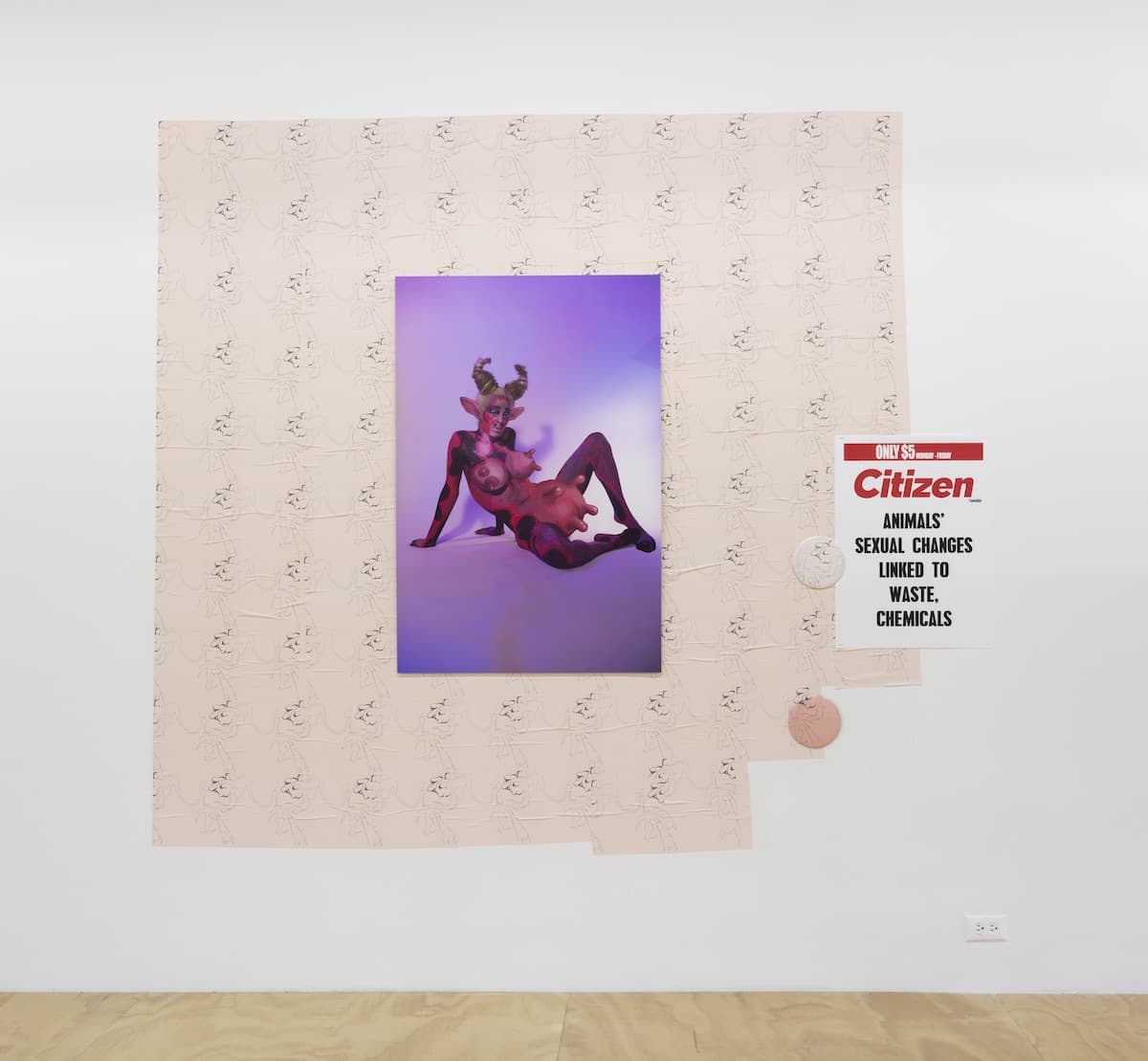
Juliana’s work is often described as influenced by futurism. “In the future, I hope there can be a radical paradigm shift in the way that we understand our relationship to time, progress, the material manifestations of the universe, and the universe as a spiritually driven entity,” she says. Gathering her tools for the future revolution, Juliana inspires us to be brave as we stare down the unknown of the 2020s, making her the perfect person to guest-edit this issue’s art section.
Juliana organised her editorial input almost completely over iMessage, often taking days to respond due to her nocturnal lifestyle – “I like going out, I guess I can’t answer why,” she says, when asked what attracts her to club culture. You can see her attitude in who she has chosen to feature: multidisciplinary artist Sadaf Nava, post-internet star Sondra Perry, and pin-up painter Olivia De Berardinis. “These are all artists that I look up to. I really value the work they produce and how they don’t sacrifice,” says Juliana. “They’re all equally invested in the formal and aesthetic processes of making art, as well as the social or conceptual concerns you could think about art through.”
Sondra’s work explores themes such as digital surveillance, Black culture’s hyper-visibility online, and predatory social dynamics. For Juliana, it’s the interplay between content, context, and intent that makes her work so impactful. “There’s a lot of restraint in Sondra’s aesthetic, but it simultaneously manages to say a lot and carry a lot of emotional weight,” she says. “The emotional complexity of her work becomes a way of thinking about technology.” Much like Juliana, Sondra interrogates the dominant systems of power and knowledge, but with a more direct focus on how these are replicated in the digital sphere. “She’s asking interesting questions about technology,” says Juliana. “Everything from gaming to facial-recognition software, and the ethics of technology that we might assume to be benevolent.”
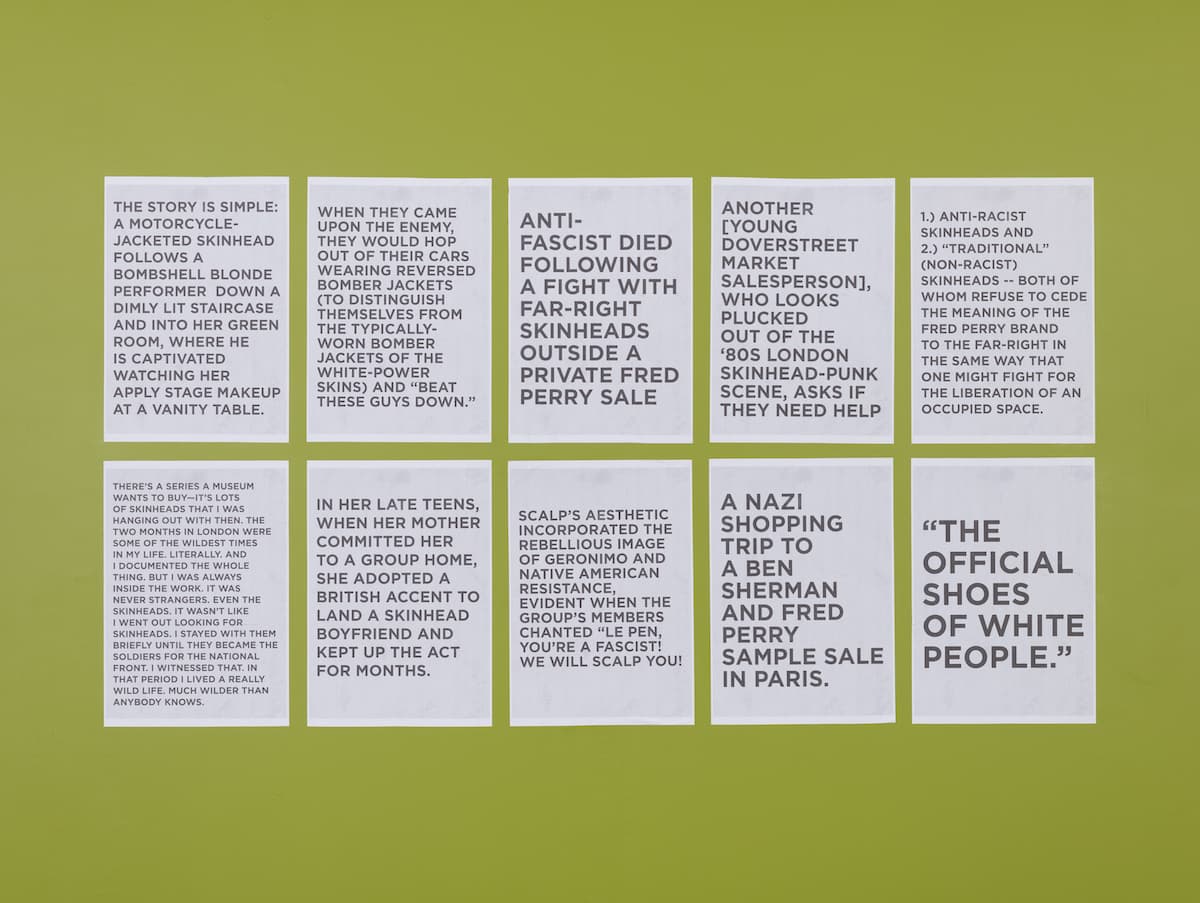
Iranian-Canadian composer and visual artist Sadaf ’s confrontational approach is not dissimilar to how Juliana works. “I think Sadaf’s sensibility is about wanting to create friction, so I’ve always really liked her work,” she says. The two have built a mutual respect from playing the electronic music circuit in New York. “Sadaf is a friend of mine,” explains Juliana. “We’ve worked on many different projects – she’s played at Shock Value [the nightlife project co-founded by Juliana] and we’ve DJ’d together.”
Working in a similarly tech-imbricated mode, Sondra and Sadaf are Juliana’s iPhone- generation peers. Her interest in 71-year- old Olivia De Berardinis is a case of looking beyond her own contemporaries: “Olivia issomeoneIlookupto–she was one of my dad’s favourite artists and I inherited that from him.” Throughout the 1970s and 1980s, Olivia gained prestige for her pin-ups. As well as regularly contributing to men’s magazine Penthouse, she also had her work included on the pages of Playboy alongside captions by Hugh Hefner. By the end of the 1980s, she was the figure at the forefront of this realm of art. Her hyperbolic female forms play with ideas around fetish and mainstream iconography, much like Juliana’s work.
